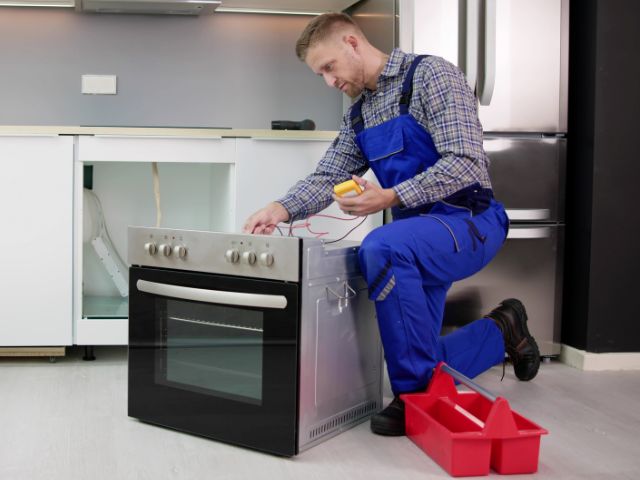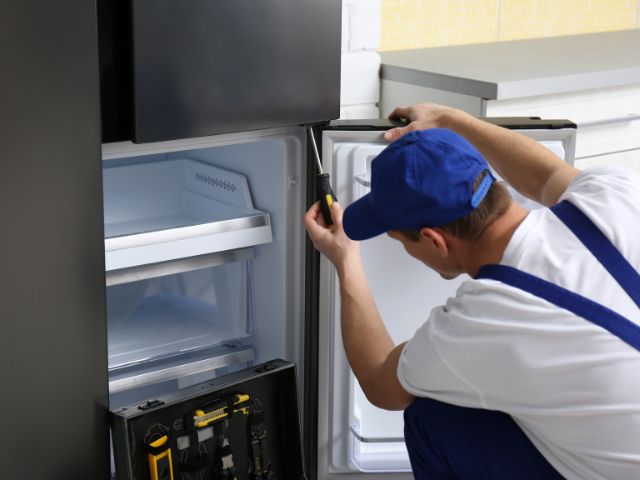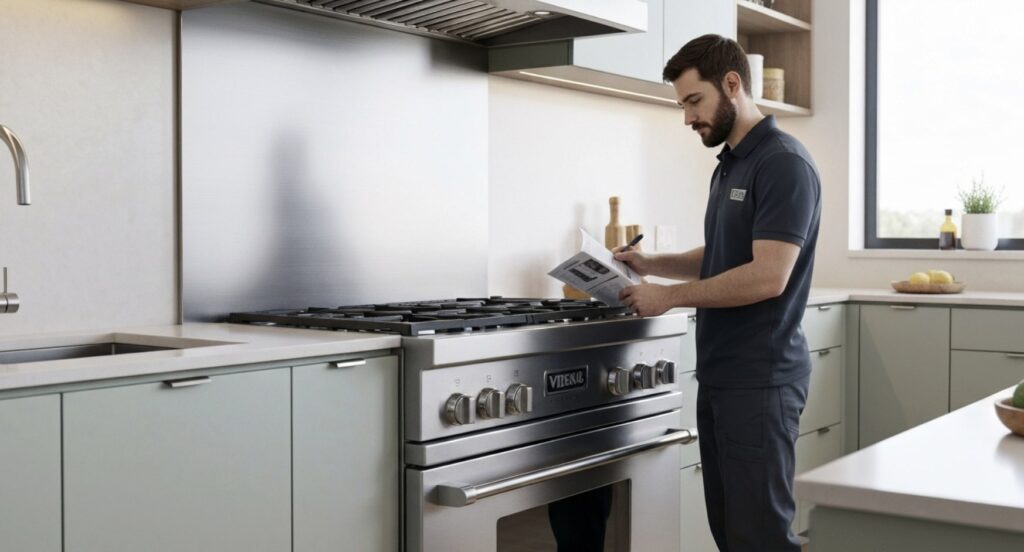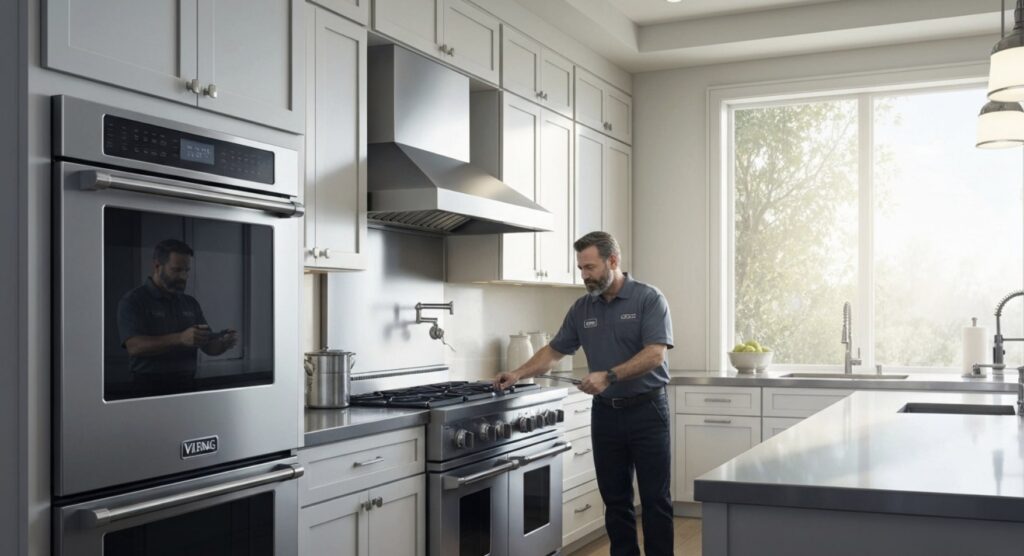When your Viking oven starts making strange noises, it can be alarming, especially if you’re not sure what’s causing the issue. From rattling sounds to unusual buzzing, there are several potential reasons for this, and addressing them promptly is essential to prevent bigger problems from arising. In this guide, we will break down the most common causes and a step-by-step solution on how to fix an oven making strange noises. Whether you’re a seasoned DIY enthusiast or just want to avoid a costly repair, this guide will walk you through everything you need to know.
Causes of an Oven Making Strange Noises
Before jumping into the solution, it’s important to understand what could be causing your oven’s strange noises. Here are the most common culprits:
- Loose or Damaged Fan Blades: If your oven has a convection feature, the fan that circulates air might be loose or damaged, creating a rattling or grinding noise.
- Worn-out Motor: A buzzing or humming sound could be an indication that your oven’s motor is wearing out and may need replacement soon.
- Loose Oven Racks: Oven racks that aren’t securely in place can vibrate or make clanging noises when the oven is in use, especially at higher temperatures.
- Faulty Igniter or Gas Burner: If you hear a clicking noise from a gas oven, the igniter may be having trouble lighting the gas.
- Thermostat Issues: Inconsistent temperatures caused by a malfunctioning thermostat can also lead to odd noises, often due to the oven overworking itself.
Now that we know the common causes, let’s dive into how to fix an oven making strange noises step by step.
Step-by-Step Solution to Fix an Oven Making Strange Noises
Step 1: Unplug the Oven and Ensure Safety
Before starting any repair, the first and most important step is to ensure your safety. Unplug the oven from its power source or turn off the breaker if it’s a built-in model. If you have a gas oven, make sure to shut off the gas supply. Safety should always be your top priority when dealing with electrical appliances.
Step 2: Check the Oven Racks
One of the simplest causes of noise is loose or improperly seated oven racks. Remove the racks, clean them, and place them back securely in their grooves. Make sure they’re locked into place and not causing any unnecessary movement or vibration. This often solves the clanging or rattling noise issues.
Step 3: Inspect the Convection Fan (For Convection Ovens)
If your oven has a convection feature, the fan that helps distribute heat evenly can sometimes get loose or damaged. Here’s how to check the fan:
- Remove the back panel: Unscrew the panel inside the oven to access the fan.
- Inspect the blades: Look for any signs of wear or damage. A bent or loose blade will cause the oven to make a grinding noise.
- Tighten or replace the fan: If the fan blades are loose, tighten the screws holding them in place. If the blades are damaged, they will need to be replaced.
Step 4: Check the Motor
A buzzing or humming noise often points to an issue with the motor, especially in convection ovens where the motor powers the fan. To inspect the motor:
- Remove the fan cover: Behind the fan, you’ll find the motor.
- Listen for noise: With the oven unplugged, manually spin the fan blades. If you hear grinding or squeaking, the motor bearings may be worn out.
- Replace the motor: If the motor is the source of the noise, it’s best to replace it. A new motor can be installed by unscrewing the old one and connecting the new motor to the same mounting bracket.
Step 5: Examine the Igniter (For Gas Ovens)
A gas oven that makes a clicking noise usually has an issue with the igniter or gas burner. Follow these steps:
- Remove the bottom panel: To access the igniter, remove the oven’s bottom panel.
- Inspect the igniter: If the igniter is covered in grime or appears damaged, it could be misfiring, causing the clicking noise.
- Clean or replace the igniter: Try cleaning it first. If the problem persists, replace the igniter with a new one.
Step 6: Inspect the Thermostat
A faulty thermostat can cause uneven heating and strange noises as the oven cycles on and off. Here’s how to inspect it:
- Test the thermostat: Use a multimeter to check if the thermostat is functioning correctly.
- Replace if needed: If the thermostat isn’t working, replace it. This can solve the issue of overworking components, which often leads to noise.
Step 7: Test the Oven After Repair
Once you’ve completed the steps above, plug the oven back in (or turn on the gas supply), and run it to test if the noise is gone. If you still hear noises, it might be time to consult a professional to avoid further damage to your appliance.
Final Thoughts
Learning how to fix an oven making strange noises can seem intimidating, but with the right tools and guidance, most homeowners can troubleshoot and resolve these issues themselves. Remember, if the noise continues after following these steps or if you’re unsure about handling certain repairs, it’s always a good idea to call in a professional.
At Viking Appliance Repair Pros, we specialize in diagnosing and fixing all types of oven problems, from noisy components to serious mechanical failures. If you’re ever in doubt or need assistance, don’t hesitate to contact us for expert help.
FAQs
- Why is my oven making a rattling noise? A rattling noise is usually caused by loose oven racks or a damaged convection fan. Ensure the racks are properly secured, and inspect the fan for any damage.
- What should I do if my gas oven keeps clicking? A clicking noise in a gas oven often points to an issue with the igniter. Cleaning or replacing the igniter should resolve the problem.
- Can I continue using my oven if it makes strange noises? It’s not advisable to use an oven that makes unusual noises, as it could indicate a larger issue that may lead to further damage. It’s best to diagnose and fix the problem as soon as possible.
- When should I call a professional to fix my noisy oven? If you’ve tried basic troubleshooting and the noise persists, or if you’re uncomfortable performing repairs yourself, contact a professional to prevent worsening the problem.
Want more? Click here for our previous post on Why Your Oven Smells Weird and How to Fix It.







